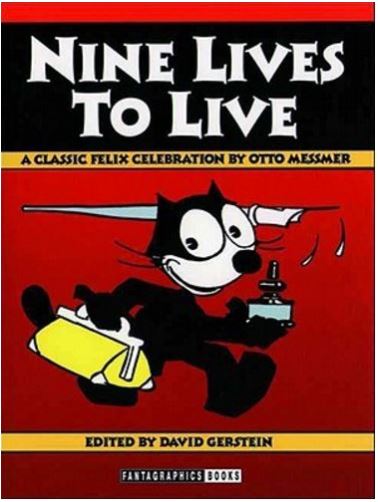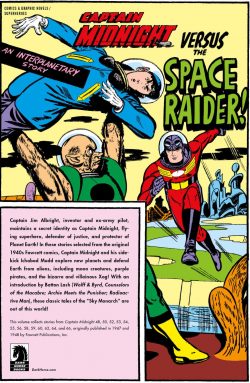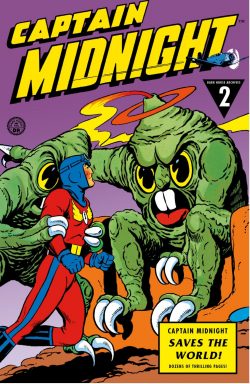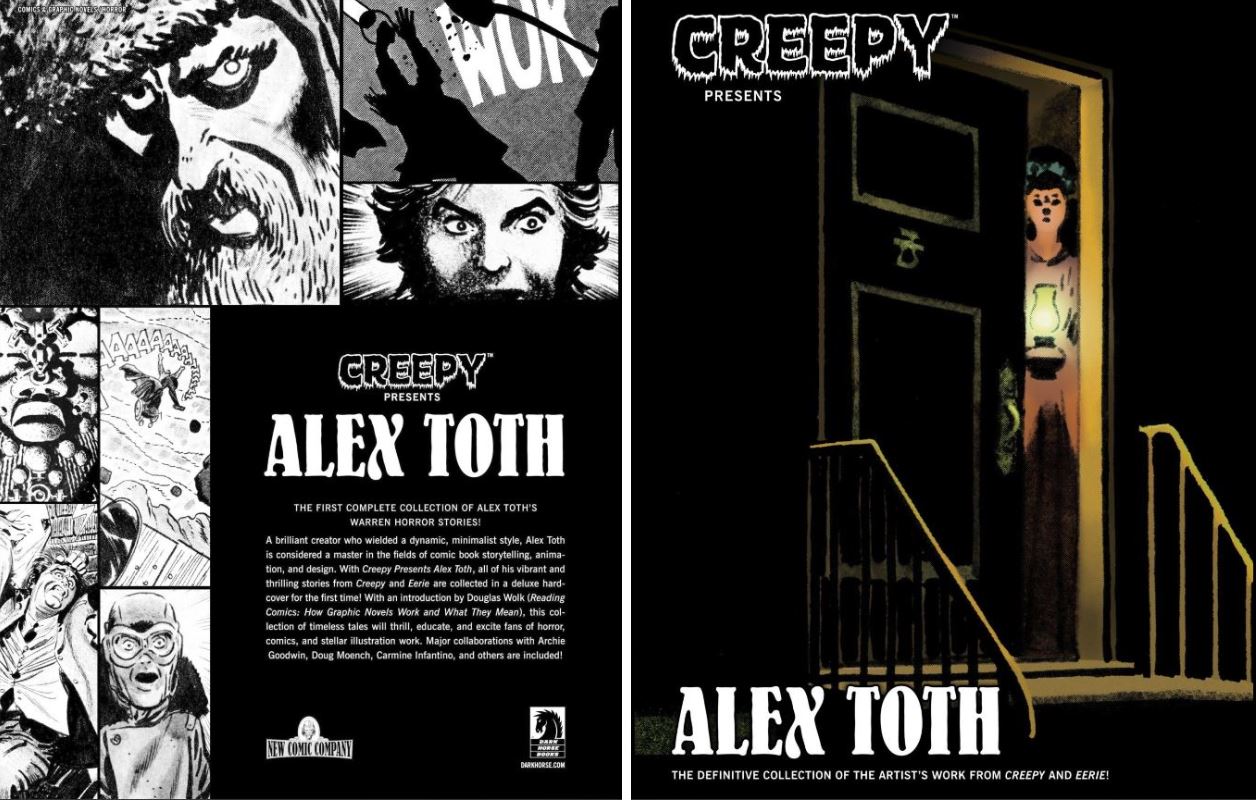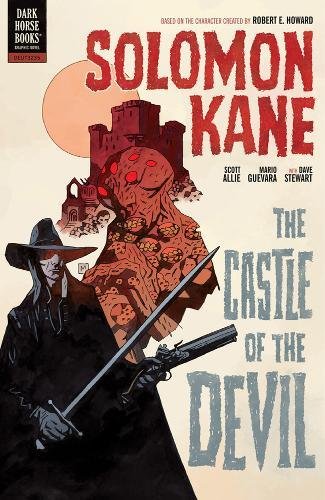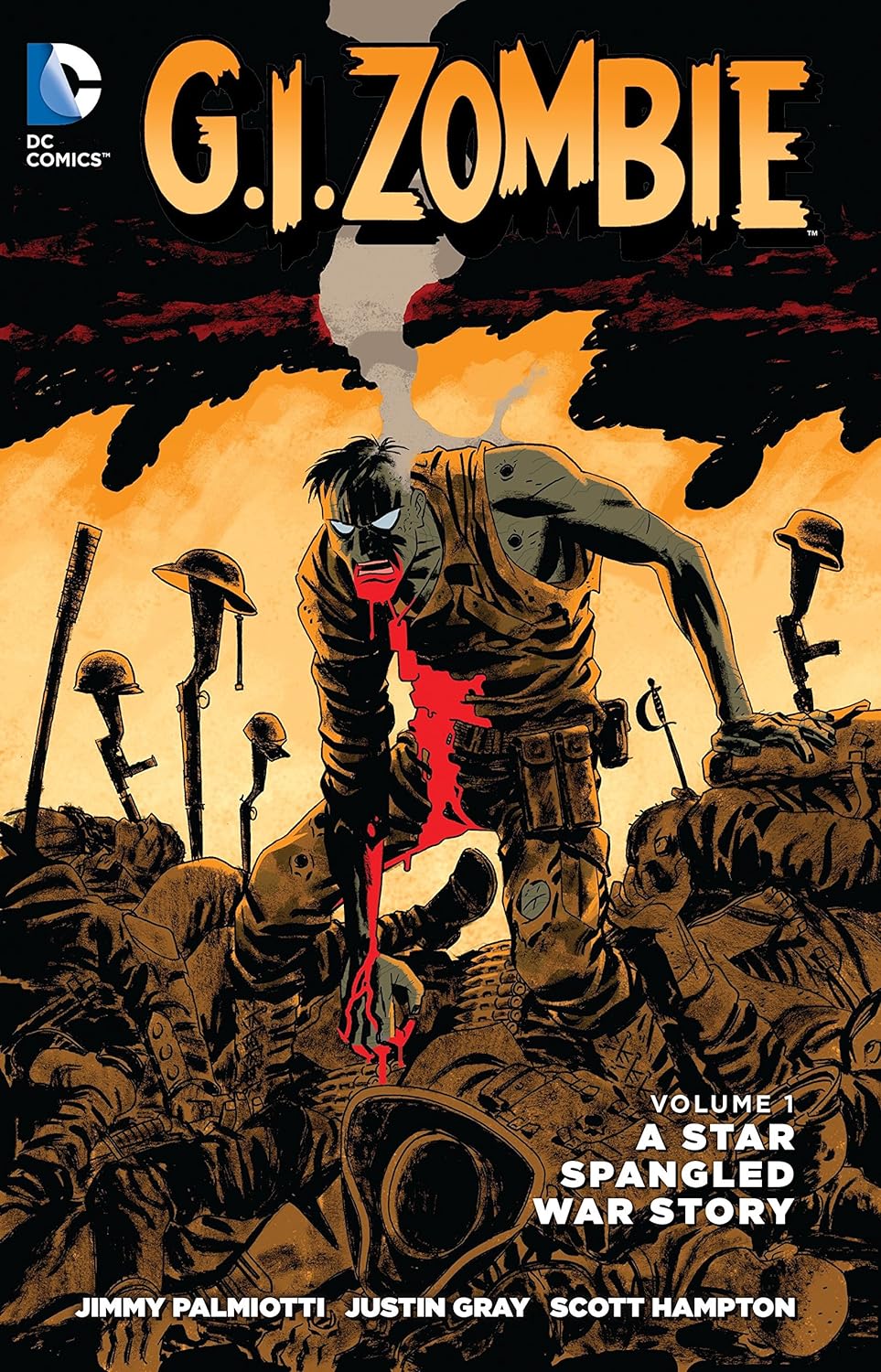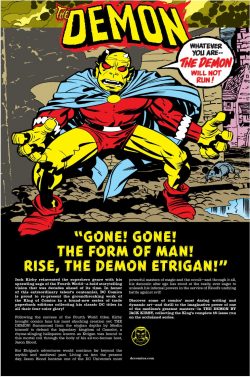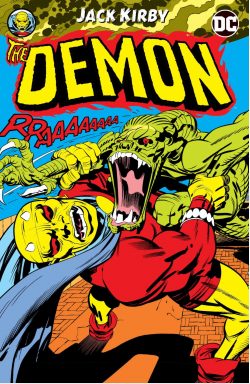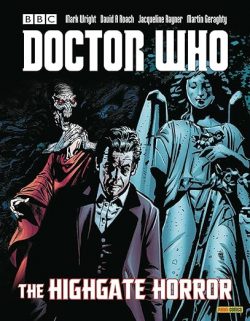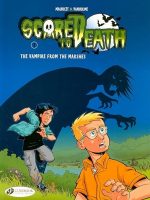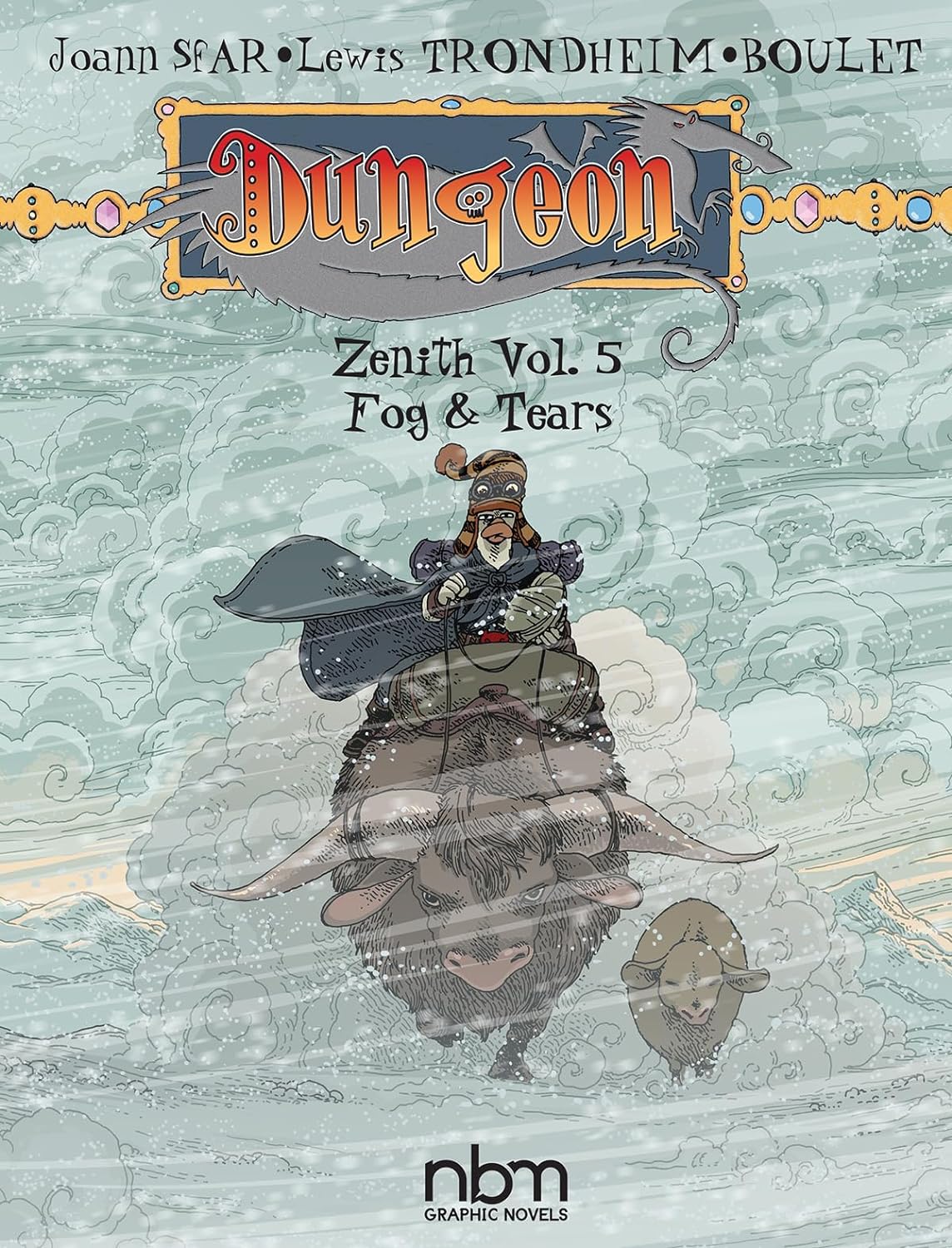
By Joann Sfar, Lewis Trondheim & Boulet, translated by Joe Johnson (NBM)
ISBN: 978-1-68112-316-5 (TPB/Digital edition)
Somewhere way out there, is a planet called Terra Amata. On this world of rich history and diverse ways of life, there’s a castle in a fantastic land of miracles, quests and adventures. Once upon a time it was also a rather dangerous meeting place dubbed the Dungeon…
As primarily crafted by prolific artisans Joann Sfar (Les Potamoks, Professeur Bell, Les olives noires, The Rabbi’s Cat) and Lewis Trondheim (Little Nothings, Stay, Ralph Azham) in collaboration with associates of a collective of bande dessinée creators (L’Association) – the Donjon saga has generated 59 volumes since debuting in 1998. A cult hit all over the world, it began as spoof and parody of roleplaying fantasy games, but as so often with stories of innate charm and high quality, it grew beyond its intentions…
After a cruelly long hiatus, English translations recently resumed, repackaged in full-colour album-sized paperbacks, forming sub-divisions of a vast, eccentrically raucous, addictively wacky generational franchise which welds starkly adult whimsy to the weird worlds of Sword & Sorcery sagas. These omnibus tomes take a legion of horribly human anthropomorphic stars into territories even wilder than those seen in Dungeon: Early Years, Parade, Zenith and Monstres. Latterly, adjuncts such as Antipodes and Bonus joined the sprawling braided mega-saga set on an alien world very much like ours in all the ways that really matter…
Dungeon reveals Terra Armata in time-separated epochs via periodic glimpses of a fantastic edifice on an unstable world where magic is a natural resource. Anthropomorphic inhabitants of the surreal realm include every kind of talking beast and bug, as well as monsters, demons, smart-a$$es, wizards, politicians and always – in all ways – strong, stroppy women-folk, making sense and taking charge. Whenever you look there’s always something happening and it’s usually quite odd…
Nominal star throughout the eons is a duck with a magic sword enabling – and eventually compelling – him to channel and/or be possessed by deceased heroes and dead monsters. At the time of these tales – long before his ethical downfall and rise to the unassailable rank of Grand Khan of dying, burning Terra Armata – he is simply Herbert of Craftiwich: and as usual he’s in a lot of trouble…
Just so we’re all on the same page: the “Dungeon” referred to is (mostly) an eternal hostelry and meeting place for wandering heroes, villains and extras we readers see over centuries. Adventures are staged as figurative times of day. Prequel series Potron-Minet relates to the dawn of the establishment, Donjon Zénith – the focus of today’s lesson – concentrates on a glorious hey-day, whilst the decline takes up Crépuscule – the twilight years.
Joining master craftsmen Sfar & Trondheim and supplying the art is Gilles Roussel AKA “Boulet”. He was born in the Parisienne sous-préfecture (sub-prefecture) of Meaux on February 1st 1975 and studied at the Graduate School of Decorative arts in Strasbourg, before creating comics like Raghnarok in 2001. Three years later he was one of the first to publish autobiographical webcomics (“Blog BD”) and became a leading light in the burgeoning field: a doyen of Paris’ Festival des blogs BD. Amongst jobs for magazines like Psikopat and Tchô, Boulet’s milestones include La Rubrique Scientifique, science comics series Project Octopus (from 2017), and many key literary collaborations such as Erik le Viking with Terry Jones (2008) and Par bonheur, le lait with Neil Gaiman (2015). In 2006, he took over the art for Donjon Zénith from Trondheim.
As so lavishly translated by NBM, Fog & Tears shares French Donjon Zénith tomes 9 &10: Larmes et brouillard and Formule incantatoire: seeing valiant Herbert in the worst trouble of his life in the eponymous opening instalment. The Dungeon has been captured by magical villain Delacour and all attempts to recapture it have failed. Now Herbert’s allies plan to take it back…
The duck has bigger problems. The dashing lover has just had a son with his beloved: a Kochak warrior princess. Isis is adamant that the infant will undergo all the rituals of her people, and he will accompany her into a frozen hell. He’s keen to accede to her every wish but the devout steppe-dwellers are intensely stubborn and unyielding and the duck is worried about his boy’s chances. Herbert has learned the Opasnyye Rite involves throwing infants into a pit of hungry wolves and seeing what happens…
After travelling deep into the icy region and utterly failing to talk Isis out of it, Herbert steals the baby and makes a run for home with an outraged army of fanatical military marvels on his heels. With Kochak ninjas and – far worse – Isis in close pursuit, the duck rejoins his abandoned allies and smuggles the waif onto the infiltration mission to Delacour’s Dungeon. Elsewhere, Dragonista couple Marvin and Pirzween – and their own newborn – survive a visit from Isis, leaving the outraged mother doubting her faith and the infant’s chances of survival.
In the aftermath, the duck duke and a dedicated band of necromancers slip into the keep, as do an army of outraged Kolchaks. In response, Delacour unleashes a plague of ghosts from profane coffer the Vault of Souls before fleeing. If the chest is not closed, the dead will overrun the world…
As chief necromancer Horus seeks to hold back the dead, Isis and her acolytes reclaim the baby, dragging poor misguided Herbert back north with them so he can witness the ritual that will make his son a Kolchak and the inheritor of the kingdom…
When all the tragedy ends, her father the Ataman realises that now his only chance for a true heir rests with him and recapturing the duck and his apostate daughter can wait…
In second chapter ‘Incantatory Spells’ his abandoned comrades – Marvin and Pirzween – take centre stage as Herbert’s ally Alcibiades recruits them for a convoluted conjurors’ quest to close the mystic chest still spewing ghosts into the world of the living. With only rapidly-weakening Horus holding back the host, Marvin undergoes humiliation multiple agonizing self-inflicted penances and even more humiliation as he chases down a string of components that will allow his magic wielding allies and comrades to stop the undead invasion.
It’s not the succession of weird wizards and constant stupid diversions that get to him though, it’s sneaking about in cowardly disguises – like when the mighty lizard must impersonate an elf – and Pirzween’s constant back-seat warrior-ing that ticks him off. That and her stupid girlish manner around old school flame/utterly unnecessary mystical quest-mate Blaise…
In the end though, even Herbert – and especially Blaise – have to agree that it’s Marvin’s idea and muscle that save the day and end the threat…
To be Continued…
Please be warned: these cartoon tales are a bit more sophisticated than general English or American fare. I know you’re okay with vicariously indulging in extreme and excessive depictions of violence, but if you fear your children, loved ones, livestock or servants might be adversely affected by mild swearing or nipples on birds and lizards, take whatever appropriate action you choose (which I believe is the magic phrase “it’s only a comic, dear”).
The rest of us will just carry on without you…
Surreal, earthy, brilliantly outlandish, sharply poignant, wittily hilarious and powerfully tragic, this is a subtly addictive read delivered via vibrant, wildly eccentric cartooning that is an absolute marvel of exuberant, graphic style. Despite being definitely not for younger readers, Dungeon Zenith is the kind of near-the-knuckle, illicit and smart epic older kids and adults will adore. And for the fullest comprehension – and even more insane fun – I strongly recommend acquiring all attendant incarnations too.
© Editions Delcourt 2022, 2023-2005. (Donjon Zénith tomes 9 &10 by Boulet, Joann Sfar Lewis Trondheim). © 2023 NBM for the English translation.
Dungeon: Zenith Vol. 5 – Fog & Tears will be released on October 17th 2023 and is available for pre-order now. For more information and other great reads please go to http://www.nbmpub.com/.

